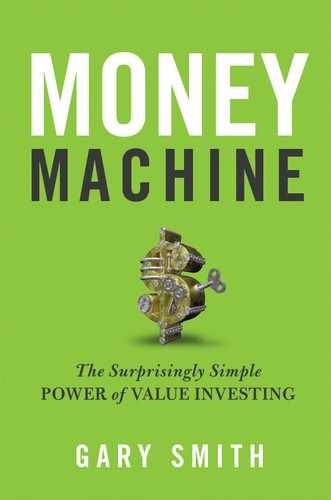SEEING THROUGH THE HYPE
If you don’t know who you are, the stock
market is an expensive place to find out.
—GEORGE GOODMAN
On March 11, 2000, I participated in a conference on the booming stock market and the widely publicized “36K” prediction that the Dow Jones Industrial Average would soon more than triple, from below 12,000 to 36,000. James Glassman and Kevin Hassett, two scholars at the American Enterprise Institute, had written a cover story for the Atlantic Monthly and a book published by Random House arguing that “stock prices could double, triple, or even quadruple tomorrow and still not be too high.” Their “conservative” estimate of “the right price” was 36,000. It was a provocative assertion and it was taken seriously by serious people.
The first speaker at the conference talked about Moore’s Law (transistor density on integrated circuits doubles every two years). I listened intently and agreed that technology is wonderful. But I didn’t hear a single word about whether stock prices were too high, too low, or just right.
The next speaker talked about how smart dot-com whizzes were. When you bought a dot-com stock, you were giving your money to clever people who would figure out something profitable to do with it. I again listened intently and I agreed that many dot-com companies were started by smart, likable people. Heck, one of my sons had joined with four other recent college graduates to form a dot-com company. The five of them rented a house in New Hampshire, slept upstairs, and commuted to work by walking downstairs.
What kind of work were they doing downstairs? They didn’t have a business plan. The key phrase was “nimble.” They were bright, creative, and flexible. When a profitable opportunity appeared, these five nimble lads would seize it with all ten hands. I knew that these were terrific kids and that hundreds of terrific kids were looking for ways to profit from the Internet. But I still hadn’t heard a single word about whether stock prices were too high, too low, or just right.
The next speaker talked about how Alan Greenspan was a wonderful Fed chair. The Federal Reserve decides when to increase the money supply to boost the economy and when to restrain the money supply to stifle inflationary pressures. As a cynic (me) once wrote, the Fed jacks up interest rates to cause a recession whenever they feel it is in our best interests to be unemployed.
It is very important to have the Fed chaired by someone who knows what they’re doing. I listened intently and I agreed that Alan Greenspan was an impressive Fed chair. But, once again, I didn’t hear anything about whether stock prices were too high, too low, or just right.
I was the last speaker, and I was the grump at this happy party. I looked at stock prices from a variety of perspectives and concluded that not only was it far-fetched to think that the Dow would hit 36,000 anytime soon, but that the current level of stock prices was much too high. My final words were, “This is a bubble, and it will end badly.”
I was right—eerily so. The conference was on Saturday, March 11, 2000. The NASDAQ dropped the following Monday and fell by 75 percent over the next three years from its March 10, 2000, peak. AOL fell 85 percent, Yahoo 95 percent. The interesting question is not the coincidental timing of my remarks, but why I was convinced that this was a bubble.
During the dot-com bubble, most investors did not try to gauge whether stocks were reasonably priced. Instead, they watched stock prices go up and they invented explanations to rationalize what was happening. They talked about smart kids and Fed chairs. They looked at processing speeds and website visitors.
They didn’t talk about whether stock prices were too high, too low, or just right. This book will explain how to answer that question, which is after all the most fundamental question in investing. The answer—no surprise—is value investing.

